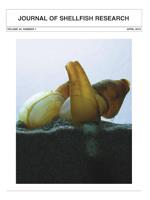Geoducks (Panopea spp.) are recognized as one of the longest-lived and largest burrowing bivalves. Five extant species support commercial fisheries in different countries, yet their phylogenetic relationships are unclear. Phylogenetic analyses using cytochrome oxidase c subunit I, 28S, and 18S partial sequences on five Panopea spp. were performed to understand existing biogeography and to unravel taxonomic uncertainties in the genus. The cytochrome oxidase c subunit I sequences revealed two major clades. The first clade included Panopea zelandica as a sister taxon of Panopea globosa; the second clade included Panopea abbreviata, Panopea generosa, andPanopea japonica.Contrary to expectations, geographically proximate species (P. generosa and P. globosa) belong to different lineages, and geographically distant species (P. generosa and P. japonica) showed lower genetic distance at nuclear loci, suggesting that P. generosa could be related to the common ancestor of P. japonica. Divergence values for mitochondrial DNA, however, indicated that P. japonica might be regarded as a distinct species. Analyses using both nuclear genes suggest that the ancestral species of P. globosa may have been broadly distributed through the Pacific coast to South America.
How to translate text using browser tools
1 March 2015
Phylogeny and Phylogeography of the Geoduck Panopea (Bivalvia: Hiatellidae)
Ignacio Leyva-Valencia,
Pedro Cruz-Hernández,
Sergio T. Álvarez-Castañeda,
Delia I. Rojas-Posadas,
Miguel M. Correa-Ramírez,
Brent Vadopalas,
Daniel B. Lluch-Cota

Journal of Shellfish Research
Vol. 34 • No. 1
March 2015
Vol. 34 • No. 1
March 2015
evolution
geoduck
molecular markers
Panopea
phylogeny
PHYLOGEOGRAPHY




